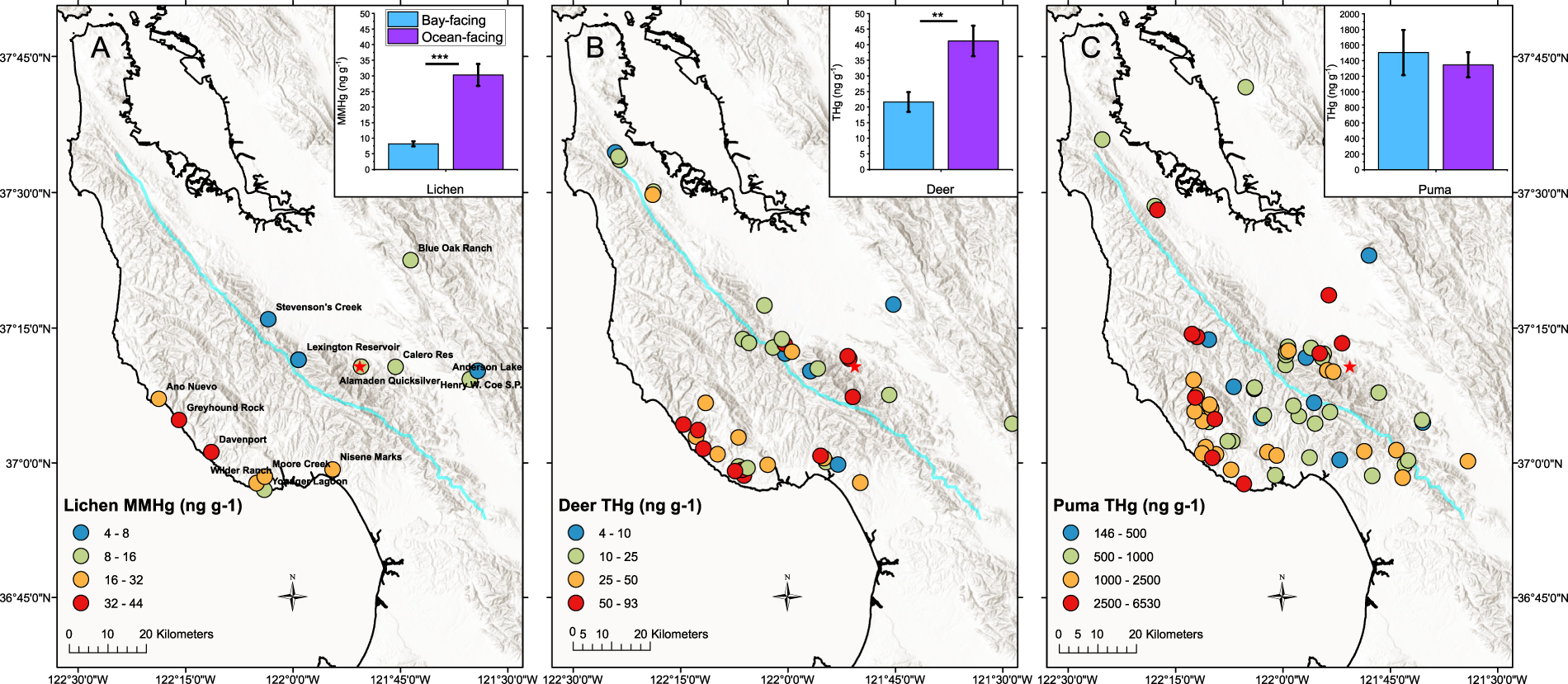The marine fog that shrouds global coastlines may offer picturesque scenes and a sense of peace, but scientists in the United States warn it may be carrying a highly toxic form of mercury that threatens wildlife and wider ecosystems.
Research conducted at University of California Santa Cruz finds that the mercury levels in mountain lions living in a nearby coastal range are three times higher than for the same pumas living outside of the “fog zone.” The neurotoxin threatens health and reproduction, and potentially the survival of the big cats affected.
Mercury in atmospheric pollution is converted to methylmercury in deep ocean waters and then carried by fog droplets, says environmental toxicologist Peter Weiss-Penzias, who led the study published in Nature. The methylmercury rolls in with the fog, settling on plant life and animal fur. The research does not focus on a risk to humans, but as mercury moves up this food chain the concentrations can increase by more than 1,000 times.
The new study adds to previous work that confirms fog-borne mercury in other species – lichen and the deer upon which the mountain lions feed, among them – but is the first to confirm that the “supertoxic” methylmercury levels reach up to this top predator in the food web.
“Lichen don’t have any roots so the presence of elevated methylmercury in lichen must come from the atmosphere,” said Weiss-Penzias. “Mercury becomes increasingly concentrated in organisms higher up the food chain.”
That became evident as the scientists took fur and whisker samples from 94 coastal mountain lions and 18 outside the coastal zones. Mercury concentrations in the coastal samples averaged about 1,500 parts per billion (ppb), compared with nearly 500 ppb in the noncoastal group, with at least one lion having mercury levels that are known to be toxic in marine species like mink and otter.
The research followed the initial curiosity of Weiss-Penzias, who was riding his bike to work more than a decade ago and encountered the damp fog on his route.
“I was riding through this absolute fogstorm, with water dripping off my glasses, and I just wondered, ‘What’s in this stuff?'” he said. So he sent samples to a lab. “The lab called me, saying they’d have to re-run the tests, because they didn’t believe the numbers.”
Weiss-Penzias notes that mercury in the air doesn’t recognize borders. “What’s emitted in China can affect the United States just as much as what’s emitted in the United States,” he said. That’s why there is an international treaty, the Minamata Convention on Mercury adopted in 2013, to address the toxic pollution.
Scientists know that most of the man-made mercury released into the air comes from burning coal and other industrial processes. What scientists don’t know yet are all the ways that mercury emitted across the globe is affecting the planet, and Weiss-Penzias hopes the fog research advances both an understanding of mercury impacts and how the knowledge informs the treaty itself.
The researchers next hope to study lizards in coastal Chile, and other environmental “hotspots” where mercury levels may affect coyotes, bobcats and birds in coastal areas.

Did you like it? 4.5/5 (29)








